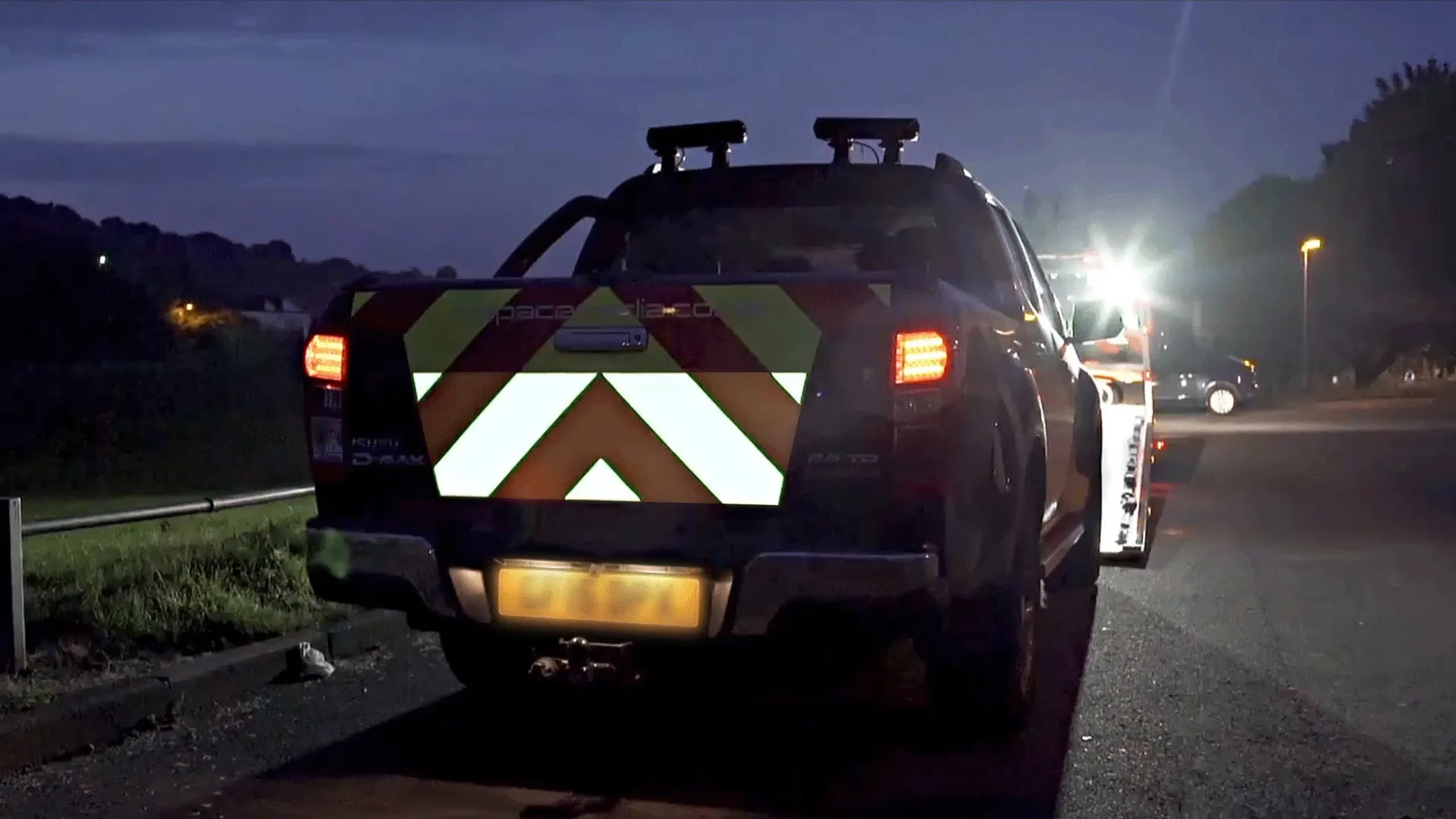
The chevron kit material can be applied to most vehicles and signs, noted Alex Knowden, director of sales and business development at Inspace, based in Chatham, south-east England.
Inspace says that it has developed the technology over the past two years and independently tested it in the most rigorous conditions. The illuminated solutions use patented components and are less than 1mm thick.
This makes the chevrons and safety signage suitable for all types of fleets because it can be shaped and moulded to fit anywhere on the rear or side of a vehicle.
The technology also possesses IP69 waterproof rating and a minimum illumination life of 20,000 hours before any light depreciation is noticed.
The company says that its chevrons and safety signage maintain the highest levels of performance in lowlight, night-time and poor weather conditions – such as rain and fog – without the same limitations experienced by traditional chevron technology.
“Our illuminated vehicle technology provides far greater visibility when compared to premium-grade Chapter 8 chevrons, so other road-users can gain vital seconds to safely reduce speed, give additional space and where possible move into an adjacent lane,” said Knowden.
“We are already in discussions with a number of automotive manufacturers, as well as leading vehicle leasing and fleet management businesses, because they recognise the need to protect personnel working on the UK’s road network."










